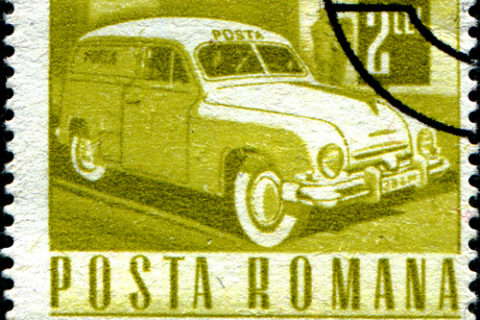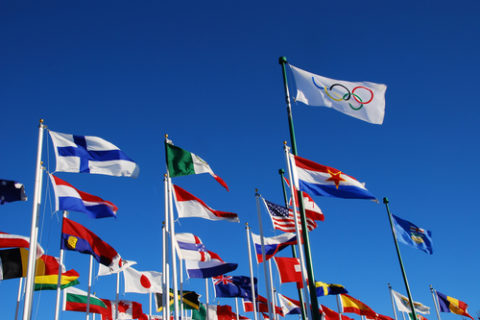Annie Pettit
Far, far away, in a quaint little village, a group of fishermen guts some Arctic Char while sharing jokes in a strange sounding language. They are speaking English. Elsewhere in the country, a family looks forward to escaping the hustle and bustle of a skyscraper city with a weekend trip to the cottage. The children pack their skis and snowboards in preparation for hitting the slopes, while mom and dad pack their bathing suits for beach time. They are going to the same cottage.
Oh yes, I’m talking about Canada. A land that stretches west to east from the Pacific Ocean to the Atlantic Ocean, and north to south from the Arctic Ocean to 8,891 kilometres of border with the USA. It’s a land where it can take fifteen hours to drive to the next province or a mere ten hours to drive to the nearest city. It’s a land whose geography protects and nurtures unique cultures, such as fishing villages in Newfoundland and Labrador, while also eagerly soaking in the US culture.
Though often overshadowed by the USA, which has ten times the population, Canada’s population of 35 million people is half the size of the UK or France, but larger than Australia. Seventy-five percent of our population lives within 160 kilometres of the USA, and we share television shows, radio broadcasts, colleagues, friendships, family, language, and more with them. Though some non-North Americans consider Canadians and Americans to be identical on so many levels, within North America, a Canadian is as different from an American, as an Italian is from a Columbian. As most cultures and countries do, we pride ourselves on being unique.
Given our desire for uniqueness, researchers working with the Canadian population need to be particularly sensitive to the distinctiveness of our language, perceived or real, by being aware of words that have more popular Canadian counterparts. For instance, surveys and discussion guides will need translations for words like soda (pop), candy bar (chocolate bar), and whole milk (homo milk), while other words, such as check (cheque) or favorite (favourite), will simply need a different spelling.
Similarly, Canadian slang ought to be used in research materials where appropriate. If the study focuses on beverages, there ought to be an answer option for a double double. If the study is about dessert, there ought to be answer options for Nanaimo Bars and Beaver Tails. And be prepared to code open-ends that use words in strange ways like crappy tire (Canadian Tire), mickey (small bottle of liquor), or vancity (Vancouver) in the verbatims.
More significant differences within Canada lie in our federally mandated bilingualism. Product packages must be written in both French and English (stickers added post hoc are approved but frowned upon), federal government services must be available in both French and English, and TV and radio stations are legally required to ensure that a specific percentage of their content, sometimes up to 50%, is Canadian.
And on the other extreme, in order to retain our French heritage, businesses in Quebec may only post outdoor signage in French (zero English!) even if the owner only communicates in Chinese, and business owners have been forced to name their businesses with French words. Sorry, Walmart, I hope you like “Le Magasin Walmart”.
In Canada, only 80% of the population claims their mother tongue is one of our two official languages, while the remaining people speak hundreds of other languages including Chinese, Spanish, German, Italian, Arabic, Tagalog, Portuguese, and Polish. Our language diversity shows no signs of decreasing as net immigration rates have remained stable at 5.6 to 6.2 per 1000 people over the last 12 years.
Though regulations do not require market research surveys, focus groups, nor interviews to be conducted in both French and English, nor any of the other predominant languages in Canada, the concept of bilingualism is so engrained in our government, our schools, our products, that many consider it offensive not to have a French research option available. Some people who only speak English, the most common language in Canada, may be offended by the lack of a French option. (Perhaps myself included.)
French is spoken all across Canada, though in unbalanced proportions, and mostly in larger populated areas, a potential problem when it comes to sampling processes. Sample pools cannot simply be drawn such that they are 21% French to match the overall Canadian population. Samples must be 80% French in Quebec, 28% French in New Brunswick, and between 0.5% and 2.5% French elsewhere. Given the ever-changing rules and perceptions surrounding bilingualism, as well as constant immigration from non-French speaking countries, sampling matrices require continual updating.
These unique characteristics demand that any research within the Canadian market must take particular care with each step of the research process. Surveys and guides must pay attention to the Canadianness of question wording. Verbatim coders must be familiar with our unique slang and terminology. French materials must be made available, particularly in regions that have a high percentage of native French speakers. And sampling, well, that’s an entire skill set of its own.
Annie Pettit is Vice President of Research Standards, Research Now



1 comment
Here’s one I got wrong. The client wrote this question–
Region located in:
a) West
b) Ontario
c) Quebec
d) Atlantic
The people from the West and Atlantic wanted it to be a list of provinces instead. We could have mapped it to this internal list of regions ourselves. A classic case of letting an internal artifact get in the way of how respondents think.